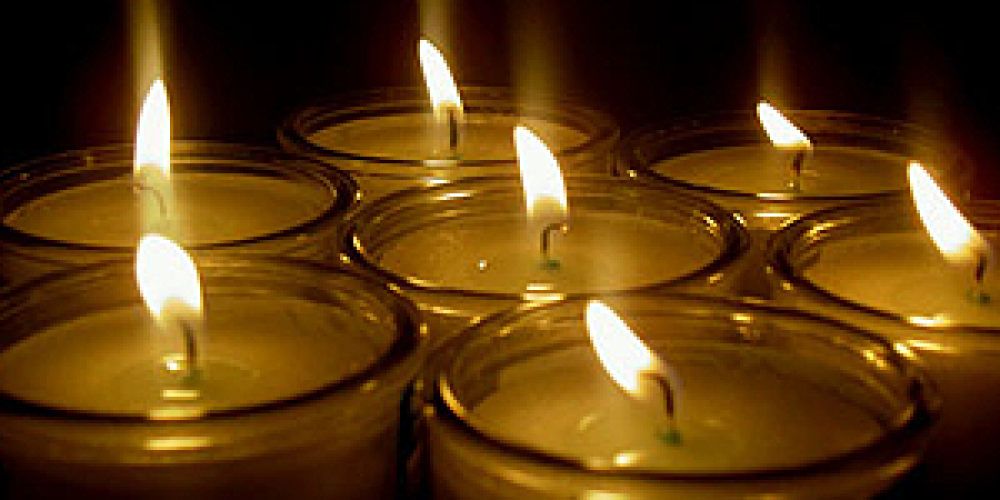Man, unique amongst all creations, was blessed by G-d with a soul. We are not just physical creations, doomed to death in due course, but spiritual beings whose souls can live forever.
The distinction between something physical and something spiritual is the capacity for sharing without diminishing. Physical things cannot truly be shared; even if I "share" my chocolate bar with you, while I may be a nice guy, I have less chocolate for myself. When one shares, say, knowledge with others, he is engaging in a most spiritual act. Not only does my knowledge not decrease by sharing, it is likely to increase, as "from my students [I learned] more than from all others", i.e., my teachers and colleagues. It is noteworthy that the mitzvah of learning Torah includes a parallel obligation to teach Torah (see Kiddushin 29b).
It is light that is the greatest symbol of sharing, and thus, eternity. "A light for one is a light for many". And not surprisingly, Torah is compared to light. Thus, we enter the most spiritual day of the week by lighting candles, a mitzvah that resonates with so many—including those for whom lighting candles is the only way they mark Shabbat.
The Sages teach that the lighting of candles is a mechanism for shalom bayit, peace in the home. While external peace is primarily physical, internal peace focuses on the spiritual. And while the obligation to light candles on Shabbat is recorded in the Mishnah, the custom to light a yahrzeit candle is not. It does, however, reflect the deeply-held belief that even after the physical end of people, they live on spiritually.
Perhaps surprisingly, the Mishnah teaches that the idea of lighting candles to welcome Yom Kippur is dependent on local custom. While today, it is a universal custom to light, such was not always the case: "in a place where the custom is not to light, one should not light" (Pesachim 53b). The Gemara even quotes a view that when Yom Kippur falls on Shabbat, we still do not light candles, as the custom not to light on Yom Kippur supersedes the mitzvah to light on Friday night.
On Yom Kippur, we remove ourselves as much as we can from the physical world—not eating, drinking nor engaging in physical intimacy, as we yearn to be like angels. What better day than this to light candles?
On a practical level, one could argue that, since one of the purposes of the candles is to have "a candlelight dinner", such does not apply on Yom Kippur. However, contrary to popular notion, the mitzvah to have light on Shabbat applies not just to the dining room, but to all rooms that will be in use over Shabbat.
In discussing this anomaly, Rava quotes the verse (familiar to all who learn Pirkei Avot), "Your people are righteous" (Isaiah 60:21), and then adds the cryptic comment, "they both intended for the same thing". As Rashi explains, the goal of all was to prevent forbidden intimacy. Some felt that by lighting candles, the fear of prohibited intimacy is reduced, as such is normally done under the cover of darkness. However, others felt that seeing one's wife by candlelight might cause one to be attracted to her; and thus, better to come home in darkness. Interestingly, Rava considers one who refrains from intimacy on Yom Kippur to be a tzadik, righteous[1].
The Talmudic sugya that began with the discussion of lighting candles on Yom Kippur ends with the teaching that there are three things G-d imbedded in nature. Two of them are that a corpse should emit a foul smell, and that a dead person will (over time) be forgotten from one's heart (ibid 54b). Without this, man would be unable to live.
Burial is the necessary first step in the mourning process, and only from that point on is comfort possible. While we always remember our loved ones, the intensity of the memory (thankfully) fades. After death, there is still life—both for those inhabiting the physical world and for those who have moved on to the spiritual world. The customs to light a yahrzeit candle and to recite Yizkor on Yom Kippur[2] are our affirmation and linking of the physical and spiritual worlds.
It's no wonder that the universal custom is to light candles, both to usher in Yom Kippur and as it exits. The light we share with others inspires hope, peace of mind, and links us to the chain of eternity.
[1] It is interesting to note that the Rambam (Teshuva 3:1) defines one who has 50% plus one mitzvah as a tzadik, even if 50% less one of his activities are sins. Of course, the reverse is also true. The line between good and evil can be thin indeed.
[2] The custom to do so on the shalosh regalim is of later, and secondary, importance.

